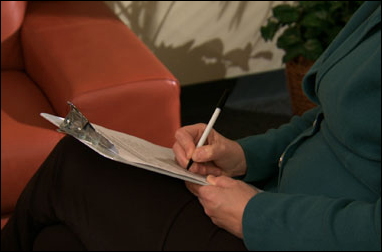Your ability to observe the person you care for and to recognize obvious, as well as not so obvious, changes is important. When you see a change that is sudden (e.g. symptoms of a stroke), unexpected (e.g. sudden mood swing) or a change that happens over several days or even weeks (e.g. the drainage from a cut that becomes thick with an odor or a change in the color or shape of a mole) – call the person’s doctor.
If he or she is reliable, listen when they tell you something is wrong. Take time and have them explain in more detail what is wrong.
Blood flow to a part of the heart has stopped. Some heart attacks are sudden and intense and there is no doubt what is happening, however most heart attacks start slowly, with mild pain or discomfort.
Symptoms of a Heart Attack (American Heart Association, 2016) are:
The most common symptom for both men and women is chest pain or discomfort. However, women are more likely to have some of the other common symptoms, particularly shortness of breath, nausea/vomiting, and back or jaw pain.
Don’t wait more than five minutes to call 911 or your emergency response number. Emergency medical services (EMS) can start treatment faster than if you try to drive someone to a hospital. Also, the person could pass out or their heart could stop before you get to the hospital.
Blood flow to a part of the person’s brain has been blocked or stopped, either from a clot or from bleeding. Symptoms of a stroke (National Institute of Neurological Disorders and Stroke, 2017) are:
Call 911 – tell the person on the phone you think your family or friend is having a stroke.
Tell the EMS responders you want to go to the local hospital that has a stroke center (if available) with 24-hour emergency stroke care. Do not let the person you care for talk you out of calling. Time is critical. If given within 3 hours of the start of symptoms, clot busting drugs given by a doctor can reduce the injury from a stroke.
Dementia
If you care for an older adult, always watch for the warning signs of dementia, a progressive decline in a person’s ability to think. Alzheimer’s disease is one type of dementia. Warning signs of Alzheimer’s disease (Alzheimer’s Association, 2014) include:
Disease Changes
If the person you care for has a known disease, such as diabetes, arthritis or glaucoma, know the changes that tell you the disease is worsening or progressing. This means you need to know what are the common symptoms.
For example, if your family member or friend has diabetes, know the behavior changes that occur with low blood sugar. If a person has glaucoma, know the signs of vision problems.
New Medicines
When a person starts new medicines, watch for changes. Changes may be shown in appearance, behavior, mental status and weight.
This lesson will prepare you to better care for a person in the home by learning how and what to observe.

Download and Print Your Daily Care Diary